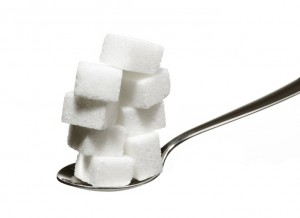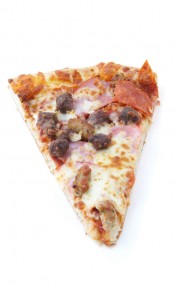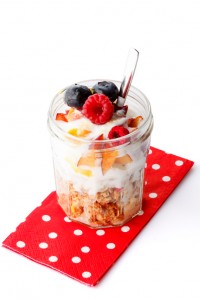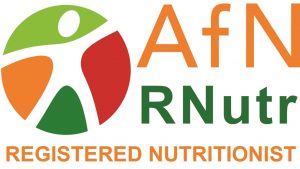Mary Poppins knew that a spoonful of sugar would improve the palatability of nasty  medicine. When work necessitates meals on the go, added sugar can be hard to avoid. Sugars turn up where we least expect them, often leaving us unaware of the amount we consume.
medicine. When work necessitates meals on the go, added sugar can be hard to avoid. Sugars turn up where we least expect them, often leaving us unaware of the amount we consume.
WHY DOES SUGAR MATTER?
The World Health Organization in 2015 stated that keeping our sugar consumption under 10% of total energy intake ‘reduces the risk of overweight, obesity and tooth decay’, the former making us vulnerable to heart disease and type 2 diabetes. A further reduction to less than 5% of energy intake, or about 30g per day, would provide additional health benefits. This lower level is the recommendation of the UK government. Food labelling gives the total sugar content of food, sometimes with the % contribution to the recommended daily allowance (RDA), the 10% of energy intake is the value often used.
Unfortunately, the average intake for teenagers is over 70g per day, for adults, it’s around 58g.
WHERE DO WE GET OUR ADDED SUGAR?
 Foods containing the most sugar in the average diet are chocolate (100g bar has 48g sugar), soft drinks (at least 30g per can), biscuits and cakes. 30g a day can easily slip into our diets without us noticing, particularly when we are on business and eating away from home.
Foods containing the most sugar in the average diet are chocolate (100g bar has 48g sugar), soft drinks (at least 30g per can), biscuits and cakes. 30g a day can easily slip into our diets without us noticing, particularly when we are on business and eating away from home.
On a recent overseas trip, tired and hungry I ordered a delivery pizza from a popular franchise; it was ready in a flash, very reasonably priced – but weirdly sweet! I chose the Americano, which with the regular base had 3.1g sugar per 63g slice, more than I expected in a savoury dish and enough to make me dig deeper. A further check of the nutritional values revealed the Loaded Meat Lovers pizza has 5.2g sugar per 89g slice – almost one teaspoon of sugar per slice; six slices would deliver my entire day’s sugar allowance in a supposedly savoury meal.
CAN WE AVOID ADDED SUGAR?
Regular wholemeal bread in sandwiches or wraps, with savoury fillings, are generally safe, for example, an egg, cress and mayo sandwich has about 2.6g sugar. Change the bread and the added sugar content can increase – brioche buns are particularly sweet, and a bacon, egg and cheese bagel has 6.1g sugar. Tomato ketchup or sweet salad dressings will put up the added sugar content.
AND IF WE DO WANT SOMETHING SWEET?
 We know that breakfast of Pancakes with Syrup is going to be sweet, but at 52g sugar per serving, it contains the equivalent to over ten teaspoons of sugar. Still, with the less healthy ‘on the move’ breakfast options, the Pain aux Raisin comes in at around 18g (3 teaspoons), and although we might think a Bircher Muesli pot or honey granola might be a better choice, it usually has over 30g sugar (6 teaspoons), unless you make and take your own so you can control the amount of sugar added. Porridge tends to be much lower at around 11g (2 teaspoons) but smoothies, even those that look green and less fruity, can have around 25g total sugar per serving (5 teaspoons).
We know that breakfast of Pancakes with Syrup is going to be sweet, but at 52g sugar per serving, it contains the equivalent to over ten teaspoons of sugar. Still, with the less healthy ‘on the move’ breakfast options, the Pain aux Raisin comes in at around 18g (3 teaspoons), and although we might think a Bircher Muesli pot or honey granola might be a better choice, it usually has over 30g sugar (6 teaspoons), unless you make and take your own so you can control the amount of sugar added. Porridge tends to be much lower at around 11g (2 teaspoons) but smoothies, even those that look green and less fruity, can have around 25g total sugar per serving (5 teaspoons).
Our choices are compromised when we travel. It’s important to check labels and be aware of our daily intake. Choosing the least processed food with as much whole grain, fruits and vegetable and drinking water when possible, is our best hope of avoiding excess sugar.
© ExtraVitality 2017
Make and take your own Bircher with these handy containers.
by - [-]
Price: -
by - [-]
Price: -
by - [-]
Price: -
by - [-]
Price: -





























